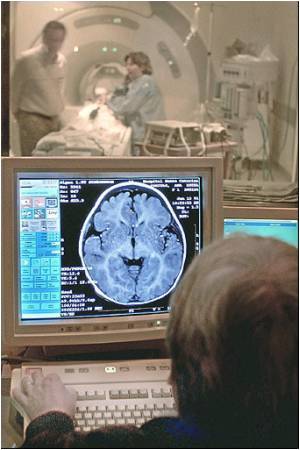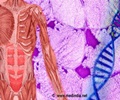A rare discovery was made by scientists that allows them to attribute two types of tumour almost entirely to specific mutations that lie in two related genes.

Chondroblastoma and giant cell tumour of bone are benign bone tumours that primarily affect adolescents and young adults, respectively. They can be extremely debilitating tumours and recur despite surgery. Occasionally, these tumours can be difficult to differentiate from highly malignant bone cancers. The mutations found in this study may be used for diagnosis of chondroblastoma and giant cell tumour. In addition, the mutations offer a starting point into research for a specific treatment against these tumours.
"This is an exceptional, if not a once in a lifetime discovery for the team," says Dr Peter Campbell, co-lead author of the study from the Wellcome Trust Sanger Institute. "What we normally see is that the same mutations occur in many different types of tumour. These mutations, however, are highly specific to these tumours. Moreover, our findings suggest that these mutations are the key, if not the sole, driving force behind these tumours."
The team sequenced the full genomes of six chondroblastoma tumours and found that all six tumours had mutations in one of two related genes, H3F3A and H3F3B, which produce an identical protein, called histone 3.3.
Extending the study to more chondroblastoma tumours and to other bone tumours, they were able to verify that this mutation was found in almost all cases of chondroblastoma. Interestingly, the team also observed that most cases of a different type of bone tumour, giant cell tumour of bone, have a mutation in the H3F3A gene, albeit in a different position in the gene. A pattern emerged where both tumour types, chondroblastoma and giant cell tumour of bone, are defined by specific histone 3.3 mutations.
The team pinpointed the specificity of these mutations to affecting a single amino acid residue on the histone 3.3 protein; G34W amino acid residue underlies giant cell tumour of the bone and K36M amino acid residue underlies chondroblastoma.
Advertisement
"Our findings will be highly beneficial to clinicians as we now have a diagnostic marker to differentiate chondroblastoma and giant cell tumour of bones from other bone tumours," says Professor Adrienne Flanagan, co-lead author from the Royal National Orthopaedic Hospital, and UCL Cancer Institute. "This study highlights the importance of continuing to sequence all types of human cancer."
Advertisement
Source-Eurekalert













